Wilderness Adventures
How to set up a sleeping system on a wilderness hunt
When hunting in the backcountry, you’ll need a good sleep setup that’s both lightweight and that lets you get a good night’s sleep. Here’s the low-down on how to achieve just that.
There are literally 1000 ways to build up a sleep system for the wilderness. And the only thing that you can be sure of, is that no matter how you do it, none of them will be perfect for every occasion. The most important thing is to find the system that not only fit you the best but also the environment you are going to hunt in.
First, we will go through the two things you will always need to have: a sleeping pad and a sleeping bag. After that we will look at shelters.
“When I got tired, I would unclip my bivi bag, roll it out and I would be ready to sleep in under a minute.”
Sleeping pad
No matter what route you go, you will need a sleeping pad. People often skip here, but that’s a big no-no. Because no matter how good a sleeping bag you get, the part you lay down on will be compressed and offer no insulation. So, you need a sleeping pad, or you will freeze.
There are three types of pads: foam, inflatable, and self-inflatable. I will only focus one the first two, as the self-inflatable pads are too heavy for the back country in my mind. Foam are often cheap, and they are a no-nonsense option. But they don’t pack up small, and they don’t have the highest comfort. Lastly, they don’t have a high R-value, which means that they don’t keep the cold away that well.
Inflatable pads, on the other hand, can pack down really small, they can be lightweight if you choose the right pad, and if you’re just a little bit used to the comfort of a modern bed, they will be a lot more comfortable for you. But they are often expensive, and with them you run the risk of a puncture.
The most important is that you get a pad that’s fit for the environment you’re going to, and here the R-value is important. A rough estimate is that you need a R-value of 1-2 for Summer hunts, 2-4 for late season hunts, 4-6 for Winter hunts, and 6+ for extreme weather condition hunts. Remember, it’s never a problem if the R-value is ‘too high’ for the season. But if it’s too low, you’ll freeze.
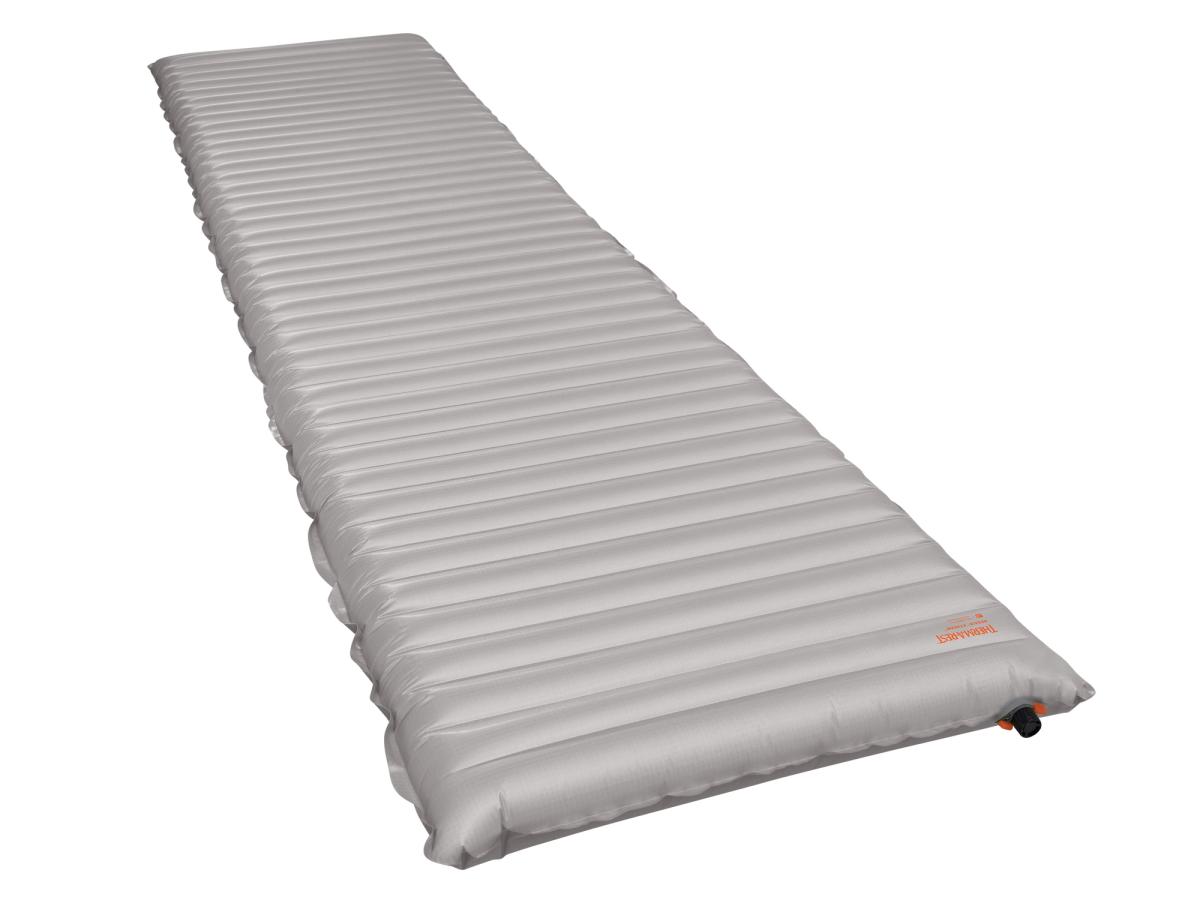
Sleeping bag
The first thing you’ll have to decide when talking sleeping bags is whether you’ll go for a down or a synthetic bag. Synthetic bags are often a lot cheaper, they can be just as warm as down, and they don’t collapse when they get soaked. But they weigh more and don’t compress well.
Down bags are lighter, they compress better, but they are often super expensive, and they don’t like water. You can get a bit around this by purchasing a bag with coated down as they repel water. But they are even more expensive, and they will still collapse when they get soaked.
Next thing to consider is shape and size. Too big a sleeping bag will leave you more room to heat up, and extra weight to carry around. So, mummy shaped sleeping bags will always be more effective, but some people don’t like them as they can’t move. In regards to size you’ll have to make sure that the bag is wide and long enough for you body shape. But again, there’s no reason for going too big as the bag will weigh more and you’ll want to keep the weight down as much as possible when heading into the backcountry.
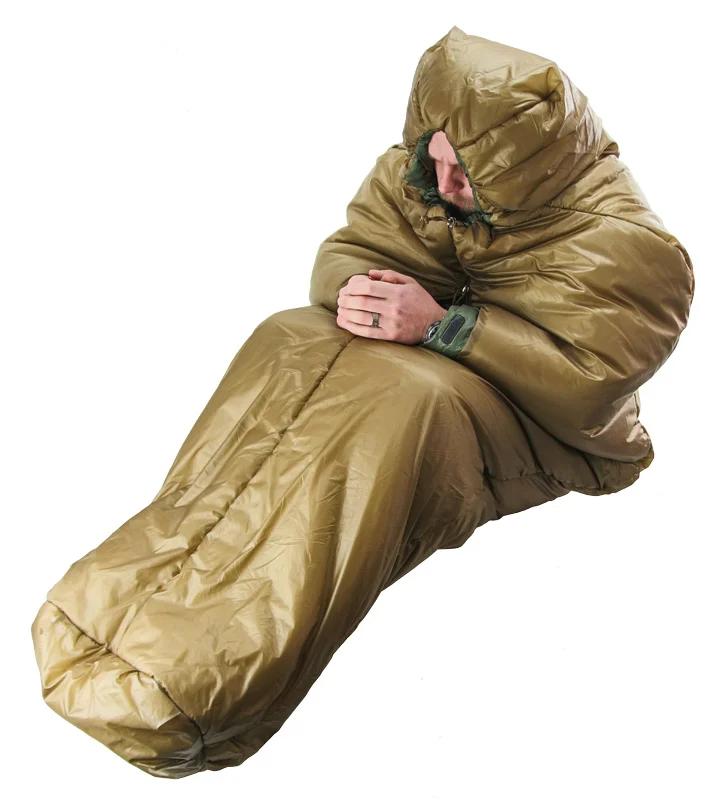

//Bivi bag//
A bivi bag is like a condom for your sleeping bag. It’s a fast and easy way to camp, one that I personally love. When I did fast solo hunts in Greenland, I would put both pad and sleeping bag inside the bivi bag, roll it all up and put it on the outside of my pack. Inside the bag, I would have nothing else then a puffy set of clothes and a bit of food.
This way I would hunt all day. When I got tired, I would unclip my bivi bag, roll it out and I would be ready to sleep in under a minute. Next morning would be the same: From I woke up till I was hunting again took a minute.
The biggest downside of this system is condensation. This can be countered by putting your head outside the bivi bag, but if it’s raining this is not an option and you will have to live with the condensation. Some people hate bivi bags because they feel cramped up inside them. It’s not a problem I share: I can put myself and all my gear inside a bivi bag and still sleep fine. Which brings me to the next point: unless you like to sleep with all your gear inside the bivi bag, it will be exposed to the elements on the outside.
Pros
Light
Fast setup
Cons
Condensation
Claustrophobic
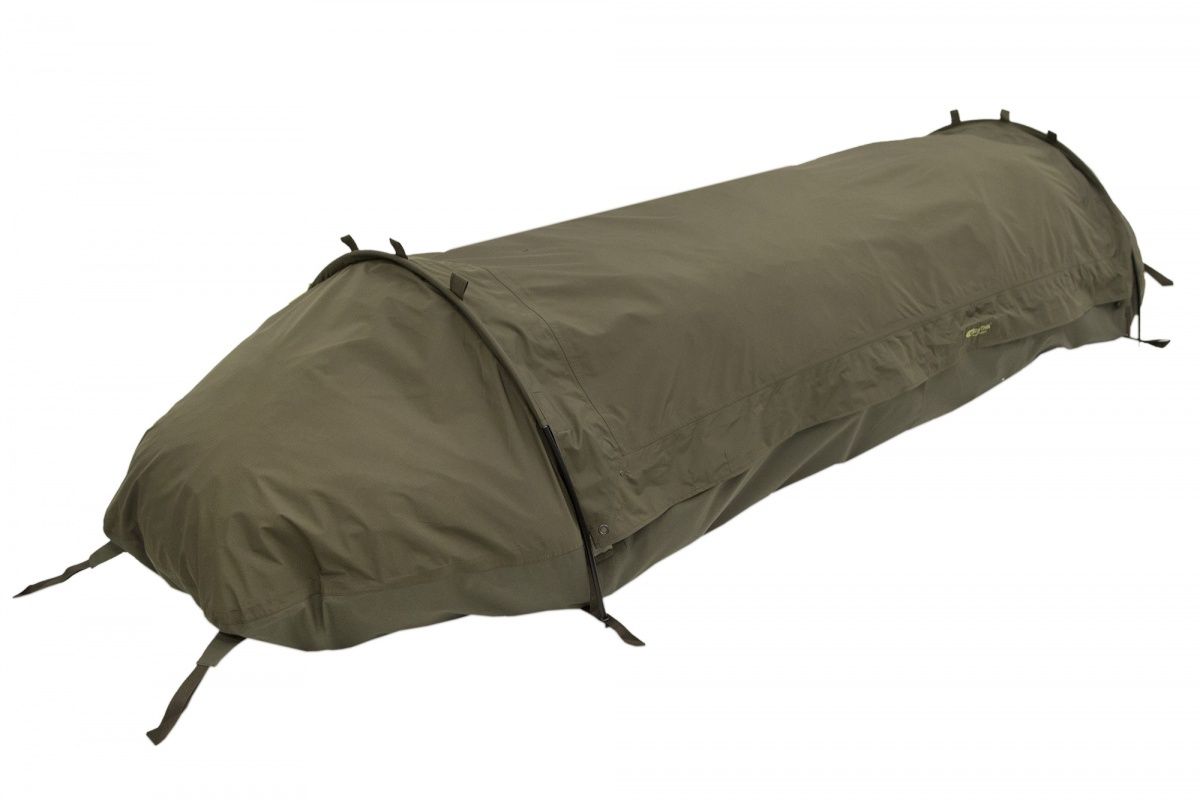
Tarp
A tarp is in its basic form just a piece of fabric that comes in all kind of material and shapes. It a shelter that will take some training to set up, as there really isn’t a standard way to pitch a tarp.
This means that you can go simple and just hang it between some tress as a roof. Or you can use your walking stick to support and pinch it to the ground, so you’ll get a sort of tent with an open end out of it. It does leave you more exposed to the elements than a tent, but a tarp can be set up a lot more places than a tent. Pair it with a bivi bag, and a lot of training in setting it up, and there will be few places you can’t handle.
Pros
Light
Versatile
Cheap
Cons
Takes training
Exposes you more to the elements than a tent
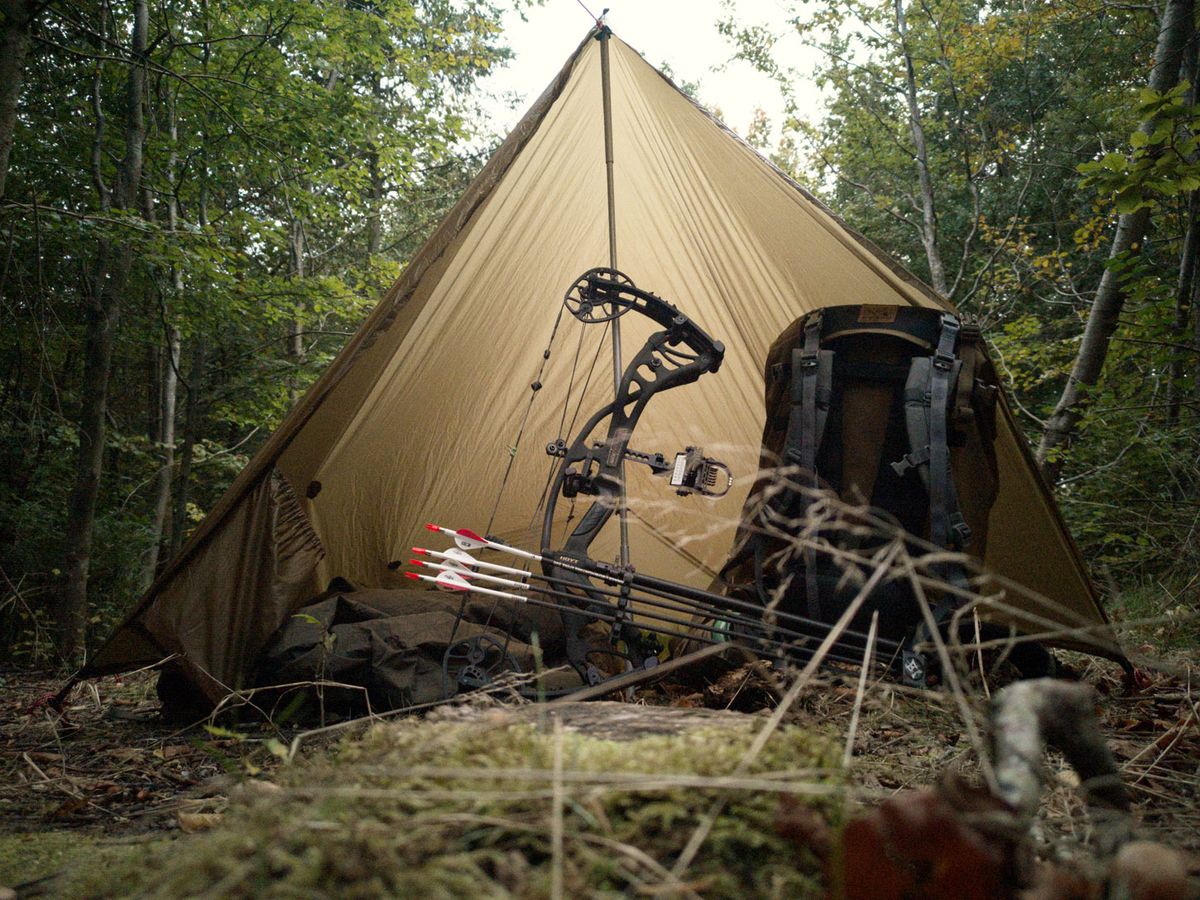
Floorless shelter
If you’re used to a cramped two-person tent, a big floorless shelter will feel like the president suite. A lot of them you can even stand up in, which is a big luxury in the backcountry. On top of that, you can combine a lot of floorless shelters with a wood stove and get everything all nice and toasty inside the shelter. All in all, there really is nothing better for a base camp set up than a floorless shelter. And lighter versions you can bring on even the most challenging of hunts.
The lack of floor can be seen as a minus, but personally I like it. You don’t have a floor that you have to keep clean. So, no more taking our boots off outside, just walk right in. If you want your stuff away from the ground, just bring a groundsheet. Personally, I use Tyvek, which is a cheap lightweight materiel used when building houses.
Condensation is a bit of a problem as floorless shelters are single walled. But in the summertime, you can keep it open, or pitch it high to get an airflow under it. In the Winter, I use a wood stove and the problem is thus sorted. So, like a tarp, a floorless shelter is a thing that takes some time to really get used to. But personally, I almost never bring a tent anymore unless I’m over the tree line.
Pros
Roomy inside
Wood stove compabile
Light
Cons
Condensation
Takes some training
Not freestanding
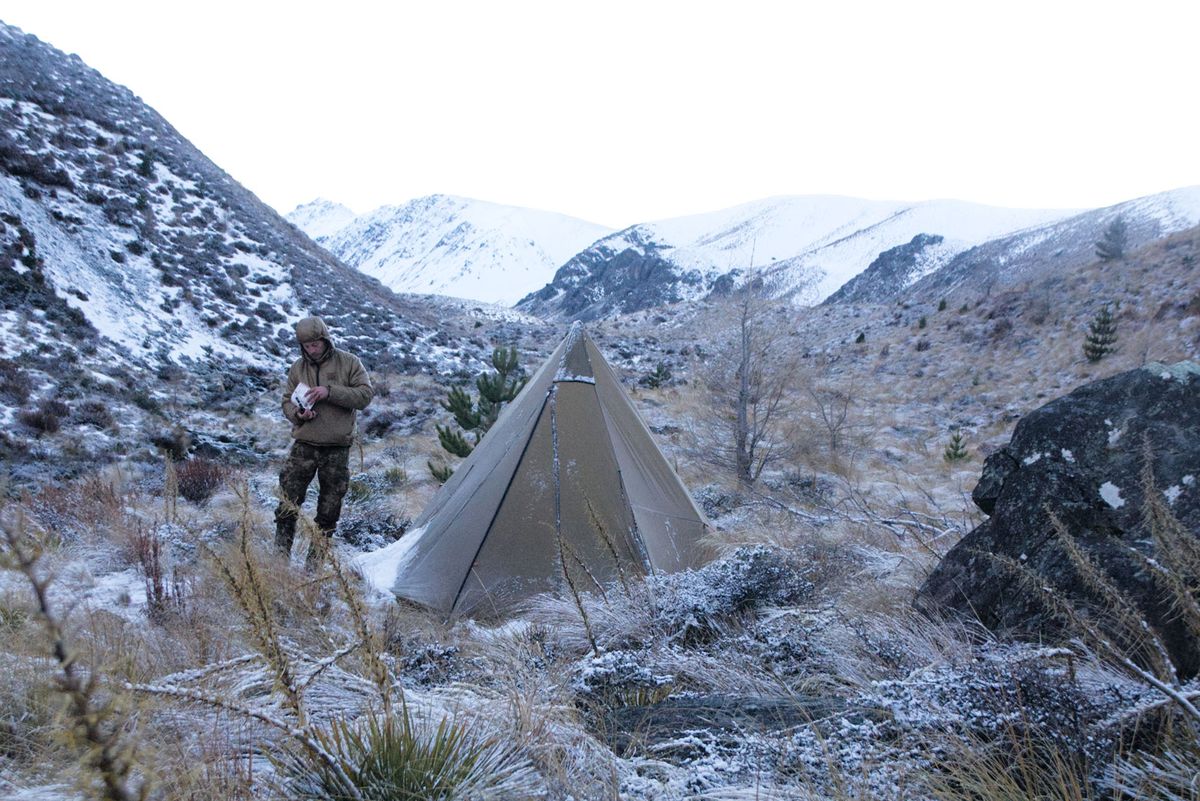
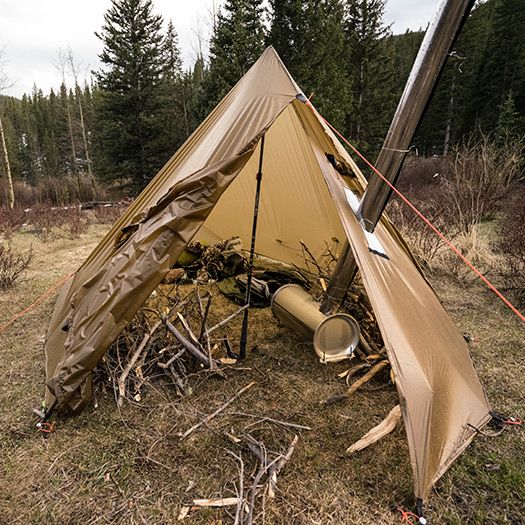
3 season tent
A 3 season tent is, as the name suggests, a tent meant for 3 out of the 4 seasons. So, until the snow starts falling, you should be a happy camper with a 3 season tent.
There is something you must know when going this route, though: A 3 season tent is not as strong as a 4 seasons tent. But a good one will take a beating, and that’s worth considering when you are looking at tents.
A 3 season tent will not be much warmer on the inside than the outside, as there is a certain air flow inside the tent. That’s a good thing because it means less condensation, and you don’t die of heat stroke on the hot days when you’re inside the tent. It will get you out of the wind and rain, and that alone should be enough to keep you warm inside.
A big plus is the weight compared to a 4 season tent. The lightest versions 3 season tents are as light as around 500 grams. You will be really crammed inside, but if you go for a tent that weighs 1-2 kg, you can find a tent for two persons that will leave you with a good amount of space inside.
Pros
Light
Ventilated
Easily set up
Keeps insects out
Cons
Not as sturdy as a 4 season tent
Can’t handle heavy snow loads

4 season tent
If you are going to camp over the tree line, in heavy snow, or in storm-like conditions, a 4 season tent is the way to go. These may give you a weight penalty but they are lot stronger, and that’s a lot better than a collapsed tent in middle of the night, with the wind blowing hard on the mountain side. Trust me, I’ve tried it.
Another good thing is that these tents are more “close” and will thereby hold heat better. I’m not saying it’s going to be warm inside them, but it will get warmer than the outside.
Pros
Strong
“Warmer”
Cons
Heavy
Expensive
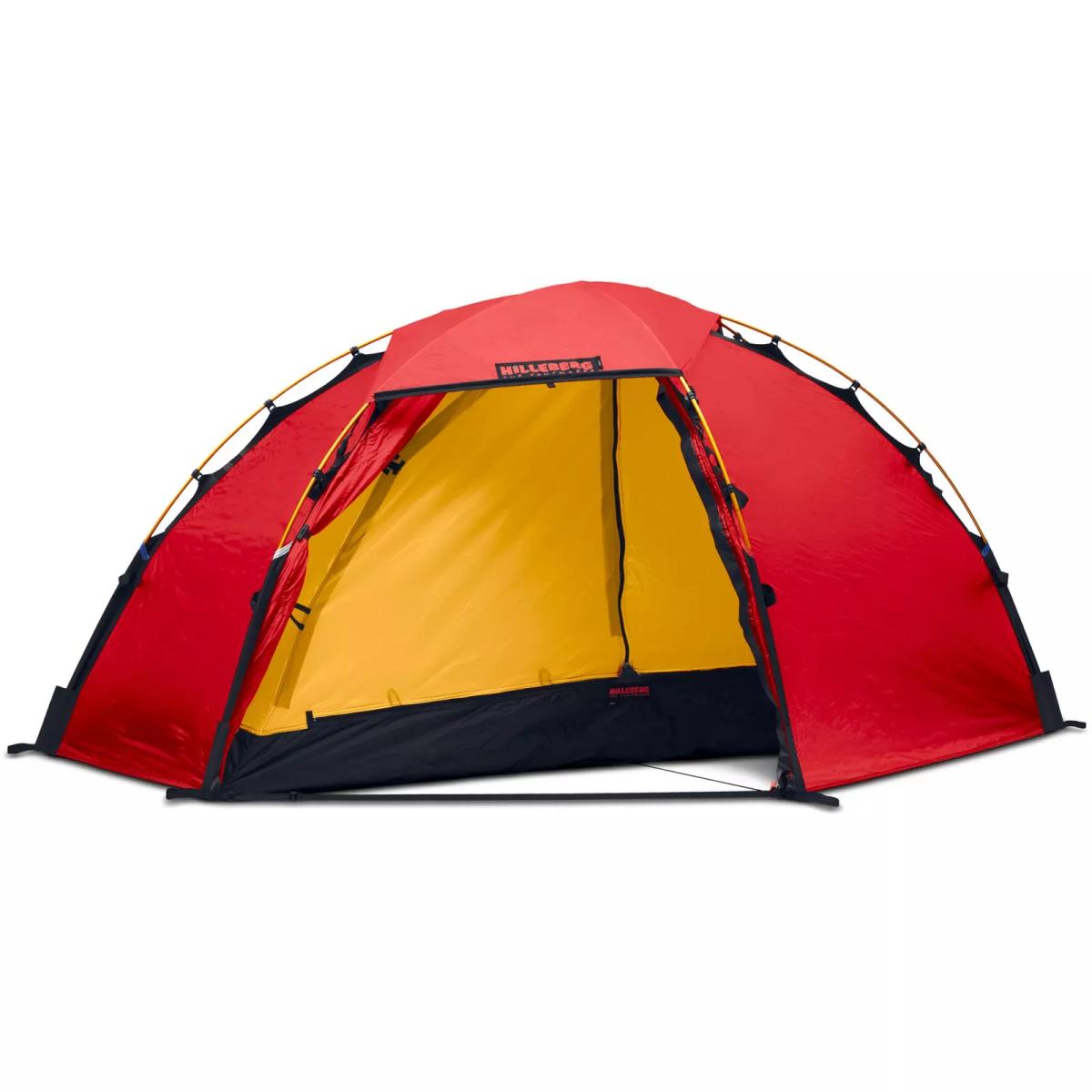
Written in corporation with Philip von Arenstorff who, after having served in the Royal Danish Army, has worked with outfitters from the North Atlantic to Africa. He is a steady contributor to several Danish hunting magazines.